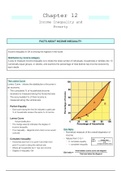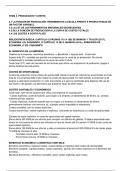Summary
Summary EKN120 - Chapter 12-18
- Course
- Institution
- Book
EKN120 Summaries include the following chapters: Chapter 12 - Income Inequality and Poverty Chapter 13 - South Africa in Brief: Private and Public Sectors Chapter 14 - Measuring Domestic Output and National Income Chapter 15 - Basic Macroeconomic Relationships Chapter 16 - The Aggregate Expend...
[Show more]













